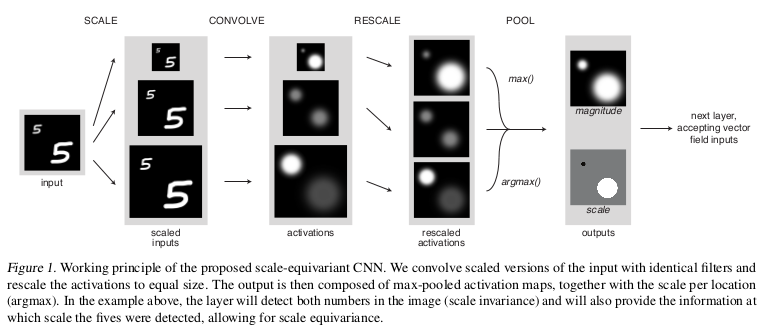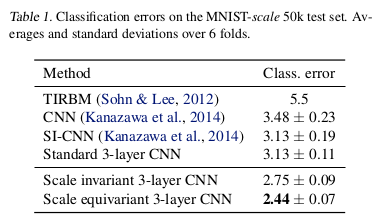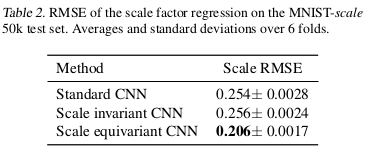Scale equivariance in CNNs with vector fields
Main Idea
This paper shows the effect of the injection of a local scale equivariance into a CNN. This highlights the usefulness of allowing for a compact representation that can also learn relationships between different local scales by keeping internal scale equivariance.
The three main parts of this work:
-
A convolutional filter is applied at multiple scales and only information about the maximally activating scale at each location is passed to the output.
-
The output is composed of the magnitude of the maximally activating scale and of the corresponding scale value itself. These two values are combined into a 2D vector.
-
Convolutions on this vector field use a similarity metric that takes into account both magnitudes and scale factors.
Scale equivariance
The image name \(x\;\epsilon\;R^{MxN}\).
A representation \(T\) of \(G\) is a function from \(G\) to a family of linear operators such that \(g,h\;\epsilon\;G\): \(T(g)T(h)\;=\;T(gh)\). Where \(g\) is the scaling of the object or pattern and \(T^{\chi}(g)\) to a linear operator that implements this scaling. \(f\) is scale invariant if: \(f(T^{\chi}(g)x)\;=\;f(x)\) and equivariant if: \(f(T^{\chi}(g)x)\;=\;T^{y}(g)f(x)\) where \(y\) is a vector field.
Scale-Equivariant convolution with vector fields


Results

